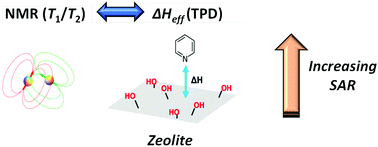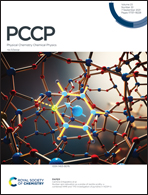Nuclear spin relaxation as a probe of zeolite acidity: a combined NMR and TPD investigation of pyridine in HZSM-5†
Abstract
The relative surface affinities of pyridine within microporous HZSM-5 zeolites are explored using two-dimensional 1H nuclear magnetic resonance (NMR) relaxation time measurements. The dimensionless ratio of longitudinal-to-transverse nuclear spin relaxation times T1/T2 is shown to exhibit strong sensitivity to the silica/alumina ratio (SAR) of these zeolites, which is indicative of material acidity. This trend is interpreted in terms of increased pyridine surface affinity with decreasing SAR. Temperature programmed desorption (TPD) analysis corroborates this observation, revealing a distinct increase in the heat of desorption associated with adsorbed pyridine as a function of decreasing SAR. A direct correlation between NMR and TPD data suggests NMR relaxation time analysis can be a valuable tool for the non-invasive characterisation of adsorption phenomena in microporous solids.



 Please wait while we load your content...
Please wait while we load your content...